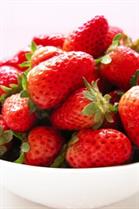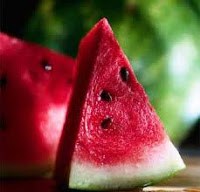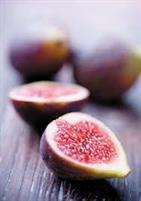Cancer-Fighting Fruits and their Cancer-Fighting Properties
December 18, 2012 | Author: Susan Silberstein PhD
According to research, the more fruit a teenage girl eats, the stronger her bones become. In a study on bone density, the girls who ate the most fruit had higher bonemineral densities, an indicator of bone strength.
Most people consider the tomato a vegetable, but actually it is a fruit. Increased tomato consumption has been linked to reduced risk for cardiovascular disease, prostate cancer, and a variety of other cancers including lung and stomach. Tomatoes contain many bioactive components, including vitamin C, vitamin E, polyphenols, and many carotenoids (such as lutein).
Tomatoes provide an excellent example of the synergy in fruits. Lycopene, the main carotenoid in tomatoes, is assumed to be responsible for the plant’s positive health effects, although exactly how it does so eludes scientists. The interactions and metabolic products of its many bioactive compounds ‘”warrant further investigation.” Again, each part plays a role, and separating them ends the play. Some research suggests that tomatoes might inhibit the formation of tissue-damaging compounds; the rutin content may be involved, “but other factors may have contributed as well.” The jelly surrounding the seeds contains lycopene and is rich in micronutrients. So why do cookbooks still tell us to seed tomatoes before using them in recipes? Serve the whole tomato, seeds and all!
 It is a berry good idea to eat berries when they are available. Anthocyanins — antioxidants that give berries their red, blue and black colors — might help delay the aging process, protect the heart and circulatory system, and prevent mental decline. The darker the berry, the higher its concentration of antioxidants. Among all common fruits and vegetables, berries have the highest concentration, especially those with dark-colored skins. Other components in berries may also help prevent heart attacks and chronic inflammation – compounds such as pterostilbene and salicylic acid. Concentrated in the seeds are a number of polyphenols (such as ellagic acid) which have cancer-preventive effects. So eat the whole berry. Fresh berries are higher in vitamins A and C than frozen or canned. Cooking degrades anthocyanins, flavonol and other flavonoids. Flavonoids support the strength and integrity of blood vessels and immune mechanisms; they also slow and some times reverse deficits in brain function, motor performance, learning and memory in older animals. Berries may also prevent or reduce the incidence of urinary tract infections, reduce cholesterol levels, and inhibit oxidation of LDL (so called “bad cholesterol.”) The pterostilbene in grapes and blueberries helps fat processing and regulation of fats in the blood. Its protective ability is superior to that of resveratrol (an “anti-aging” compound also found in grapes) and the drug ciprofibrate. Pterostilbene may be a cancer-preventive agent, may help protect the heart and blood vessels, and may aid to fend off diabetes. In animals with high blood sugar, it lowered glucose levels by 42%. if applied to humans, this research makes pterostilbene as effective as some popular diabetes drugs (without the toxicity problems). Pterostilbene is found in darker grapes but does not survive the wine-making process. Fresh cherries rival grapes, red wine, and blueberries when it comes to anthocyanins. Cherries are full of vitamin C complex, calcium, potassium, and fiber. Some studies indicate that cherries may lower heart attack and stroke risk, and help relieve arthritis pain. They may also increasee insulin levels, thus aiding type 2 diabetes, but research is only preliminary. According to various reports, cherries may help relieve the pain of gout, prevent premature aging, prevent cancer, prevent migraines, and aid sleep. Flavonoids, ellagic acid, and numerous other components are among the cherry’s “anti-cancer” chemicals. Cranberries, another fruit rich in anthocyanidins, help about 50% of people to prevent or soothe urinary tract infection or inflammation. They may prevent some ulcers. These ruby jewels have more antioxidants than almost any other fruits, and they seem to offer protection against heart disease, cancer, and the effects of aging. Cranberries may reduce damage to brain cells from a stroke. Among their organic constituents are antroxyanins, vitamin C complex, flavonoids, catechins, triterpinoids, B-hydroxybutyric acid, citric acid, ellagic acid, glucuronic acid, benzoic acid, quinic acid, and malic acid. Traditionally, cranberries have been used to decrease the recurrence of urinary stones, as a urinary deodorant, for relief of various stomach ailments, vomiting, appetite loss, scurvy, blood disorders, liver problems and cancer. Cranberries are also a natural probiotic, enhancing levels of good bacteria in the intestine and protecting it from food borne illnesses. As with other supplements, the cranberry supplements most likely to be effective are made of powdered whole cranberries rather than an extract.
It is a berry good idea to eat berries when they are available. Anthocyanins — antioxidants that give berries their red, blue and black colors — might help delay the aging process, protect the heart and circulatory system, and prevent mental decline. The darker the berry, the higher its concentration of antioxidants. Among all common fruits and vegetables, berries have the highest concentration, especially those with dark-colored skins. Other components in berries may also help prevent heart attacks and chronic inflammation – compounds such as pterostilbene and salicylic acid. Concentrated in the seeds are a number of polyphenols (such as ellagic acid) which have cancer-preventive effects. So eat the whole berry. Fresh berries are higher in vitamins A and C than frozen or canned. Cooking degrades anthocyanins, flavonol and other flavonoids. Flavonoids support the strength and integrity of blood vessels and immune mechanisms; they also slow and some times reverse deficits in brain function, motor performance, learning and memory in older animals. Berries may also prevent or reduce the incidence of urinary tract infections, reduce cholesterol levels, and inhibit oxidation of LDL (so called “bad cholesterol.”) The pterostilbene in grapes and blueberries helps fat processing and regulation of fats in the blood. Its protective ability is superior to that of resveratrol (an “anti-aging” compound also found in grapes) and the drug ciprofibrate. Pterostilbene may be a cancer-preventive agent, may help protect the heart and blood vessels, and may aid to fend off diabetes. In animals with high blood sugar, it lowered glucose levels by 42%. if applied to humans, this research makes pterostilbene as effective as some popular diabetes drugs (without the toxicity problems). Pterostilbene is found in darker grapes but does not survive the wine-making process. Fresh cherries rival grapes, red wine, and blueberries when it comes to anthocyanins. Cherries are full of vitamin C complex, calcium, potassium, and fiber. Some studies indicate that cherries may lower heart attack and stroke risk, and help relieve arthritis pain. They may also increasee insulin levels, thus aiding type 2 diabetes, but research is only preliminary. According to various reports, cherries may help relieve the pain of gout, prevent premature aging, prevent cancer, prevent migraines, and aid sleep. Flavonoids, ellagic acid, and numerous other components are among the cherry’s “anti-cancer” chemicals. Cranberries, another fruit rich in anthocyanidins, help about 50% of people to prevent or soothe urinary tract infection or inflammation. They may prevent some ulcers. These ruby jewels have more antioxidants than almost any other fruits, and they seem to offer protection against heart disease, cancer, and the effects of aging. Cranberries may reduce damage to brain cells from a stroke. Among their organic constituents are antroxyanins, vitamin C complex, flavonoids, catechins, triterpinoids, B-hydroxybutyric acid, citric acid, ellagic acid, glucuronic acid, benzoic acid, quinic acid, and malic acid. Traditionally, cranberries have been used to decrease the recurrence of urinary stones, as a urinary deodorant, for relief of various stomach ailments, vomiting, appetite loss, scurvy, blood disorders, liver problems and cancer. Cranberries are also a natural probiotic, enhancing levels of good bacteria in the intestine and protecting it from food borne illnesses. As with other supplements, the cranberry supplements most likely to be effective are made of powdered whole cranberries rather than an extract.
 Apples may help prevent breast cancer because of their high levels of fiber, phytochemicals and flavonoids such as quercetin, myricetin, kaempferol, and catechins. Eating apples is also linked with reduced risk of various other cancers, including liver and lung cancer, as well as heart disease, stroke, asthma, and type 2 diabetes. Apples aid respiratory health and weight loss. The peel contains more nutrition than the flesh, including six times the antioxidants.
Apples may help prevent breast cancer because of their high levels of fiber, phytochemicals and flavonoids such as quercetin, myricetin, kaempferol, and catechins. Eating apples is also linked with reduced risk of various other cancers, including liver and lung cancer, as well as heart disease, stroke, asthma, and type 2 diabetes. Apples aid respiratory health and weight loss. The peel contains more nutrition than the flesh, including six times the antioxidants.
Compared with other fruits, apples rank among the highest in phenolics, many of which cannot be extracted from the fruit. One apple has the antioxidant effect equivalent to 1500 mg of ascorbic acid (so-called “Vitamin C”). Really, “consuming whole foods like fruits and vegetables is more beneficial in decreasing risk of cancer, heart disease, cataracts, diabetes and other chronic diseases than consuming expensive dietary supplements [of isolated chemicals], possibly because of the additive and synergistic effects of their plant chemical content.”
Pomegranate juice appears to reduce damage to and plaquing of artery walls. It reduces blood pressure by five percent in people with hypertension. It may lower LDL cholesterol oxidation. It increases production of nitric oxide by 50%, which relaxes blood vessels, allowing blood to flow more freely. It lowers risk for cancer. No surprise that a red fruit offers beneficial phytochemicals like flavonoids and phenolic acids.
Pomegranates are rich in potent polyphenols, more than in most green tea, grape juice or orange juice. A whole pomegranate provides a day’s worth of vitamin C, as well as some iron and calcium It contains a rare fatty acid, punicic acid, which is structurally similar to conjugated linolenic acid. Pomegranate juice allows aging mice to perform better in mazes and other tests of learning man animals receiving sugar water. The brains of mice getting pomegranate juice had only about half as many beta-amyloid deposits (plaques) as the sugar water group. Betaamyloid deposits are found in the brains of people with Alzheimer’s disease, so pomegranate may slow its progression. A clinical trial of people with severe carotid artery stenosis (a narrowing or blockage of blood flow) suggested that regular consumption of pomegranate juice is beneficial. Pomegranates may help prevent and treat breast and prostate cancer as well as diabetes. They may also support joint health. Dozens of compounds contribute to their healing powers.
 Watermelon averages 40% more “cancer-fighter” lycopene per serving than tomatoes. The lycopene in watermelons is bioavailable without cooking, unlike tomatoes, and is relatively stable when the fruit is stored and refrigerated. A one-cup serving of watermelon provides 10% of the daily value for vitamin A, 12% for vitamin C, along with B vitamins like thiamin and B6, and potassium. Watermelon contains the amino acids arginine and citruline, which benefit many aspects of health including the cardiovascular and musculoskeletal systems. “Watermelon — it’s good fruit. You eat, you drink, you wash your face” (Enrico Caruso, Italian tenor).
Watermelon averages 40% more “cancer-fighter” lycopene per serving than tomatoes. The lycopene in watermelons is bioavailable without cooking, unlike tomatoes, and is relatively stable when the fruit is stored and refrigerated. A one-cup serving of watermelon provides 10% of the daily value for vitamin A, 12% for vitamin C, along with B vitamins like thiamin and B6, and potassium. Watermelon contains the amino acids arginine and citruline, which benefit many aspects of health including the cardiovascular and musculoskeletal systems. “Watermelon — it’s good fruit. You eat, you drink, you wash your face” (Enrico Caruso, Italian tenor).
 A papaya contains 250% of the RDA for vitamin C. It’s a wonderful source of beta-carotene, other carotenoids, and vitamin E complex. It may reduce the need for inflammation, and its lessens the effects of asthma. One of the top sources of vitamin B6, bananas may assist in reducing fatigue, depression, stress and insomnia. Bananas are high in magnesium, which keeps bones strong and the heart pumping, as well as potassium, which helps prevent heart disease and high blood pressure. The kiwi is another fruity gold mine. Studies indicate it helps to lower blood triglycerides (fats linked to heart disease and diabetes) and reduce platelet clumping. It also has laxative properties. An enzyme in kiwi, actinidin, will tenderize a tough cut of meat, so it evidently assists protein digestion too.
A papaya contains 250% of the RDA for vitamin C. It’s a wonderful source of beta-carotene, other carotenoids, and vitamin E complex. It may reduce the need for inflammation, and its lessens the effects of asthma. One of the top sources of vitamin B6, bananas may assist in reducing fatigue, depression, stress and insomnia. Bananas are high in magnesium, which keeps bones strong and the heart pumping, as well as potassium, which helps prevent heart disease and high blood pressure. The kiwi is another fruity gold mine. Studies indicate it helps to lower blood triglycerides (fats linked to heart disease and diabetes) and reduce platelet clumping. It also has laxative properties. An enzyme in kiwi, actinidin, will tenderize a tough cut of meat, so it evidently assists protein digestion too.
 Figs are a terrific source of energy and vitality, which may explain the aphrodisiac and fertility-boosting powers figs have been traditionally thought to possess. They contain more mineral matter and alkalinity than most fruits and are one of the highest sources of calcium among plants. A quarter cup of dried figs has about 60 mg of calcium, nearly twice as much as the same amount of low-fat cottage cheese, which has 35 mg. Both dried and fresh figs are impressive sources of both soluble and insoluble fiber, important to cardiovascular and digestive health as well as for toxin removal. Figs contain abundant antioxidants. One fig contains more polyphenols than most cups of green tea. Figs even contain some omega-3 fatty acids. This fruit is often recommended to help lower blood cholesterol and blood pressure, though its therapeutic uses go far beyond this.
Figs are a terrific source of energy and vitality, which may explain the aphrodisiac and fertility-boosting powers figs have been traditionally thought to possess. They contain more mineral matter and alkalinity than most fruits and are one of the highest sources of calcium among plants. A quarter cup of dried figs has about 60 mg of calcium, nearly twice as much as the same amount of low-fat cottage cheese, which has 35 mg. Both dried and fresh figs are impressive sources of both soluble and insoluble fiber, important to cardiovascular and digestive health as well as for toxin removal. Figs contain abundant antioxidants. One fig contains more polyphenols than most cups of green tea. Figs even contain some omega-3 fatty acids. This fruit is often recommended to help lower blood cholesterol and blood pressure, though its therapeutic uses go far beyond this.
Studies show that dried fruits, especially dates, prunes, and raisins have high phenolic components that are greater antioxidants than those in some fresh fruits. Preliminary research indicates that raisins might help fight cavities and gum disease, slowing the growth of bacteria blamed for tooth decay. Antioxidant strength may account for the ability of dates to overcome the negative effects of consuming a high-fructose corn syrup carbonated soft drink like Sprite for four hours after its ingestion. Dried fruits are high in fiber, potassium, and other nutrients. About five dried apricots provide 36% of the daily value for vitamin A. A cup of prunes contains more iron than a cup of cooked chicken and is packed with compounds that may slow the progression of heart disease.
Tart dried cherries are rich in inflammation-moderating properties. Because they are high in melatonin, they may also be a sleep-cycle regulator. Although antioxidant concentrations in dried fruits may be higher than in fresh fruits, some vitamin C content does get lost in the drying process. Preferably, get organic dried fruits without added sugars or sulfur dioxide.
Aside from these cancer-fighting fruits, vegetables also have its powerful cancer-fighting properties. Find out The Cancer-Fighting Vegetables that Should be Top of your List!
Original Article: Immune Perspectives Vol. XI, no. 2A PUBLICATION OF THE CENTER FOR ADVANCEMENT IN CANCER EDUCATION The Whole Food and Nothing But the Food by Judith DeCava, CNC, LNC[Adapted with permission from Nutrition News and Views, May/June 2006]
Join the conversation on the “Ask Holistic Cancer Coach Facebook Group.”
